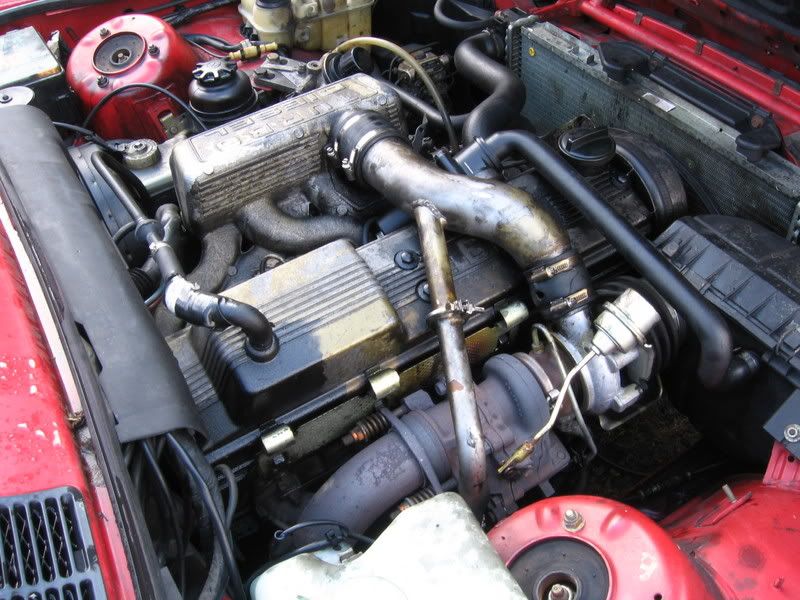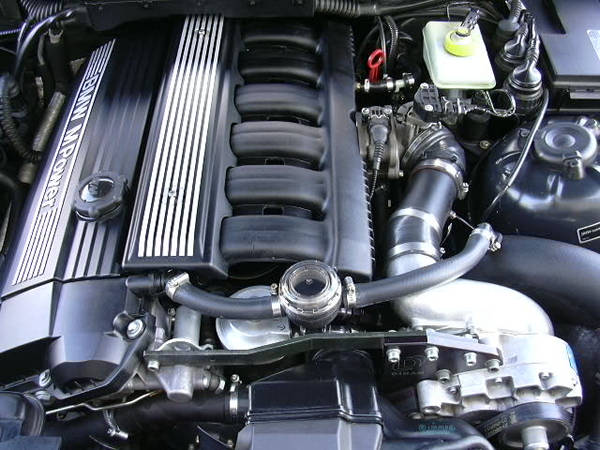I think several of us here in this thread are confused as to what actually is vacuum and what is atmosphere. If you do exactly as you say here you are still venting the crankcase gases into a ZERO vacuum. There is not vacuum in intercooler pipping, nor is there vacuum in an intake before or after an AFM or MAF. There is only boost and that is all. There is only vacuum AFTER the throttle body. As stated before, You have to connect the crankcase vent to a VACUUM that will draw the vapors out and help with rings ect ect.
Ventilation in valve cover?
Collapse
X
-
-
I dont know why you think it doesn't pull a bit of vacuum at the turbo inlet, the compressor definitely pulls vacuum.
Put a piece of paper in front of your turbo while idling, it will suck it right up.
It completely stops backing up of the turbo drain line when draining below oil level(90% of e30 setups)
all the wrxs hook up right into the turbo inlet.

here are my many setups, the car runs the best with vacuum to the inlet.
here is turbo inlet with a catch can

here is an exhaust scavange kit(they stink)

and here is no catch can straight to inlet. OEM baffle in valve cover doesnt draw in oil from my experiance

turbo inlet remains dry after 3kmiles and all pipes are oil free.
7speedshop.comComment
-
-

Turbo M42 Build Thread :Here
Ig:ryno_pzk
I like the tuna here.
Originally posted by lamboButtchug. The official poster child of r3v.Comment
-
Wait. What?
The inlet of a turbo has alot of vacuum, how do you think a turbo is able to over come atmospheric pressure?
:)
Comment
-
also a check valve is a terrible idea because it wouldnt be able to vent at all under boost, which means a nice smoke show and puked out oil from you valve cover. I've personally seen what not having a decent vent does and in one pull with a closed vent and you'll get a decent amount of oil pushed out of the valve cover gasket and sprayed all over your turbo/manifold.
7speedshop.comComment
-
The turbo inlet is sucking air through a cone filter. Theres just very little area to create anything substantial is seems because the connection for the crankcase vent is so close to open air (the cone filter)
I dont know, maybe Im over thinking this. I really want to know how to do it correctly as it may fix my idle issues on my turbo m42. If the way Kamotors has it routed works, then shit, im all for it. I guess the only way would be to measure Hg of vacuum at that location and report back.
When an engine is decelerating the vacuum created by the intake is well into 21 inches.
I suppose this is the kind of vacuum that is needed to help engine internals operate properly which was briefly discussed earlier. This is what I am most interested/ concerned about.
Turbo M42 Build Thread :Here
Ig:ryno_pzk
I like the tuna here.
Originally posted by lamboButtchug. The official poster child of r3v.Comment
-
technically the air coming from the crankcase vent is "metered air" right? by that I mean air that has been see by the AFM or MAF as air that should be burned in a mixture?
Turbo M42 Build Thread :Here
Ig:ryno_pzk
I like the tuna here.
Originally posted by lamboButtchug. The official poster child of r3v.Comment
-
-
i would go with straight to athmosphere option rather then routing it to turbo inlet. Why? Your turbo will live longer without a sludge on core. There is also a risk that with high boost level pressure in crankcase will increase and you can suck some amount of oil thru cover straight to turbo thats why c.can for oil is recommended.Comment
-
all OEM turbos route it to the turbo intake. another option is to scavenge some vacuum in the downpipe.
You want vacuum in the crankcase. Not only does it help things like rings seal, it keeps your oil seals happy. the catch can method is ghetto.Comment






Comment